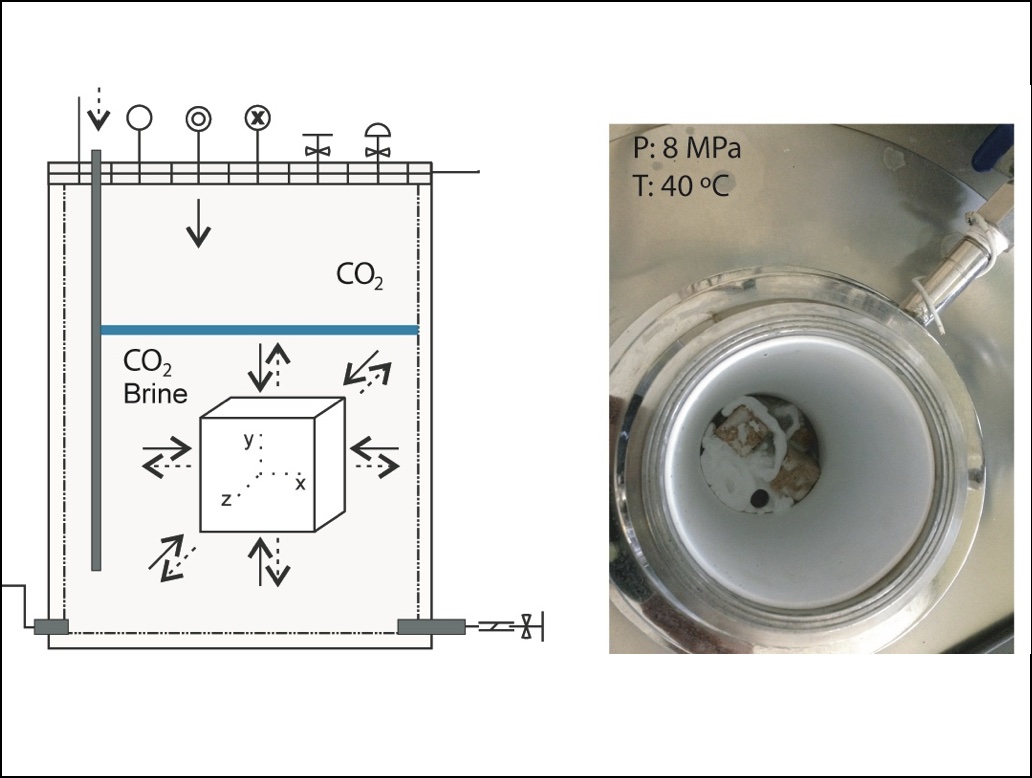Published in September in the International Journal of Greenhouse Gas Control, PilotSTRATEGY partners in Spain published a high-impact paper titled:
Experimental geochemical assessment of a seal-reservoir system exposed to supercritical CO2: A case study from the Ebro Basin, Spain
https://doi.org/10.1016/j.ijggc.2024.104233
Abstract:
The experiment was conducted in a reactor under conditions of deep saline formations (pressure 8 MPa, temperature 313 K, exposure time 30 days, and CO2-supersaturated seawater ≈0.80 Mol). Both exposed and non-exposed samples were characterised by means of Optical Microscopy, Scanning Electronic Microscopy, X-ray Diffraction and Digital Image Analysis. Furthermore, powdered samples were analysed chemically trough X-ray Fluorescence, and brine samples were subjected to chemical analysis.
The petrographic study of adjacent sandstone samples before and after the exposure to CO2-rich brine indicates an increase in porosity (≈3 %). These changes in pore structure are the result of mineral dissolution (e.g., siliceous cement) and intergranular matrix detachment and its partial removal from the rock sample, representing the initial effects induced by the CO2-rich brine. The chemical analysis of the brine reveals an increase in Ca2+ and SiO2 composition (29 % and 6670 %, respectively). After marl exposure, the brine also exhibited increased Ca2+and SiO2 content (95 % and 11,250 %, respectively), indicating the prevalence of dissolution processes.
These results suggest that in environments where CO2 enriches the brine the mixture primarily induces localized chemical adjustments in the rocks (evidenced by dissolutions in the brine). The proposed methodology can be adapted for similar experimental batch tests in other storage structures.



